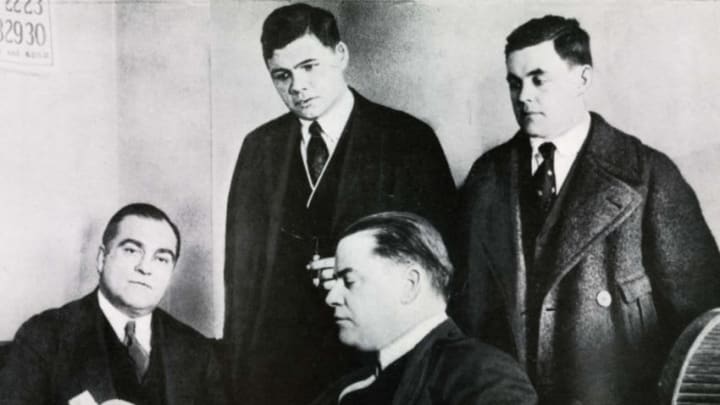The Red Sox title drought began with former owner Harry Frazee.
There were numerous reasons as to why the Boston Red Sox had an eighty-six year World Series drought and many of them were tied to the actions (or inaction, as it were) of some of the most controversial figures in team history. Longtime owner Tom Yawkey and his front office refused to integrate until 1959 while others like former GM Haywood Sullivan avoided signing free agents and gutted the core of the powerhouse 1970s Red Sox teams.
It’s only fitting that the next part in this series focuses on the former owner of the Red Sox who many fans and writers felt was directly responsible for the so-called “Curse of the Bambino.” As we all know, the Red Sox went from 1918 to 2004 without winning a World Series and the origins of the curse were laid directly at the feet of their owner at the time, Harry Frazee.
Frazee was born in 1880 in Peoria, Illinois and was both a baseball fan and theater buff from an early age. He made his fortune as a theater and boxing promoter and bought the Red Sox in 1916 after they won the World Series that year for $675,000. While the Red Sox won the World Series in 1918 under Frazee’s ownership, they finished in sixth place in 1919 and in 1920 he sold Babe Ruth to the Yankees.
It’s been said over the years that he did this to fund a production of “No, No Nanette” but this has been debunked (mostly). The real fact of the matter is that Frazee had a long-standing feud with American League president Ban Johnson, who didn’t like Frazee and viewed him as an “outsider.” The eight original American League owners were all Johnson cronies and when Frazee bought the team from previous owner Joseph Lannin, he became the first “non-original” AL owner.
Since Frazee wasn’t one of Johnson’s cronies, he didn’t do what Johnson wanted him to which upset the latter. Frazee was also in constant need of cash due to his theater habit, so he sold numerous players to the New York Yankees, including Ruth. As for the Ruth sale, it was more nuanced than just needing the money. Ruth had been a malcontent during his last two seasons in Boston due to his desire to pitch less and hit more.
He had also drawn the ire of Frazee for his excessive carousing and trouble-making, his holding out for more money, and his leaving the team for the final game of the 1919 season. Despite being one of the best players in the league, Frazee was just looking for reasons to get rid of Ruth (while trying to avoid taking a hit in the court of public opinion…shades of John Henry?).
Besides Ruth, Frazee sold or traded Carl Mays, Harvey Hendrick, Herb Pennock, Waite Hoyt, and many other players who became core players (and in many cases, Hall of Famers) for the eventual Yankees dynasty of the 1920s and 1930s. Compounding the issue was that the Yankees General Manager he was making these deals with was his former Red Sox GM Ed Barrow (himself a Ban Johnson lackey).
Frazee had actually intended to deal Ruth to the Chicago White Sox in order to get Shoeless Joe Jackson in return, but the Yankees offered more cash for Ruth than Chicago did. After the 1919 Black Sox scandal and Jackson’s banishment from baseball, it was all moot and he (Frazee) was in effect forced to deal with the Yankees.
Thus, Frazee can be seen as not only dismantling the Red Sox, but directly aiding and abetting the Yankees transformation from one of the worst teams in the American League to the most dominant dynasty in the sport over the next century. Even worse, Frazee had to take out a second mortgage on Fenway Park and use it as collateral to fund some of his theater productions. In the end, he was forced to sell the team in 1921 for $1.2 million.
The result of Harry Frazee selling the Red Sox in 1921 was that he left them bankrupt and bereft of talent. The Red Sox went on to finish in last place (or close to it) and under .500 in every season until 1934. They didn’t win another pennant until 1946 and as we all know, they didn’t win another World Series until 2004.
While Tom Yawkey and several other GMs and managers were responsible for the drought starting from when Yawkey bought the team in 1933 onward, the groundwork for the “Curse of the Bambino” can be laid squarely at Frazee’s feet. He ended up continuing to fund theater productions after he cashed out of the Red Sox before dying in 1929 at the age of 48. Perhaps it should’ve been called “the Curse of the Theater Impresario” all along.
